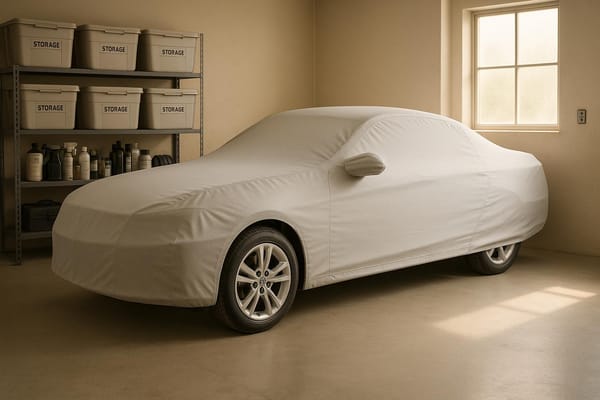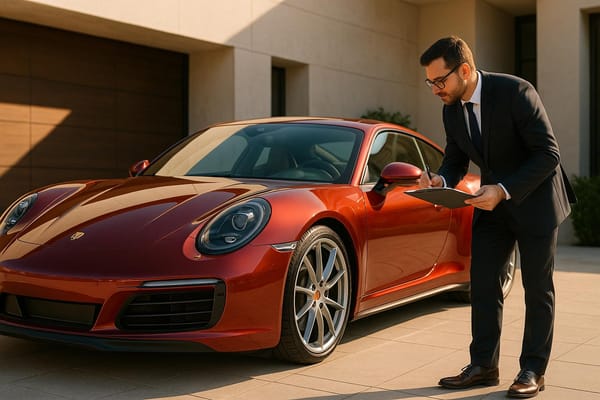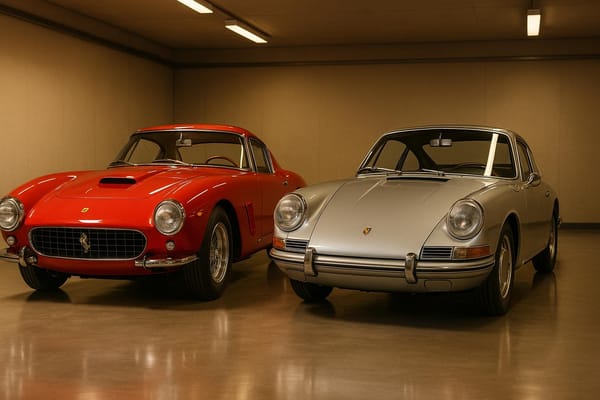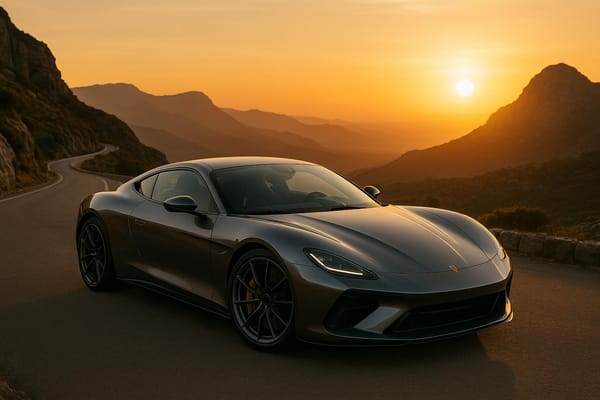Fastest Nürburgring Lap Times: Evolution Over Decades
Explore the evolution of Nürburgring lap times, highlighting key innovations, record-holding vehicles, and their impact on automotive performance and investment.
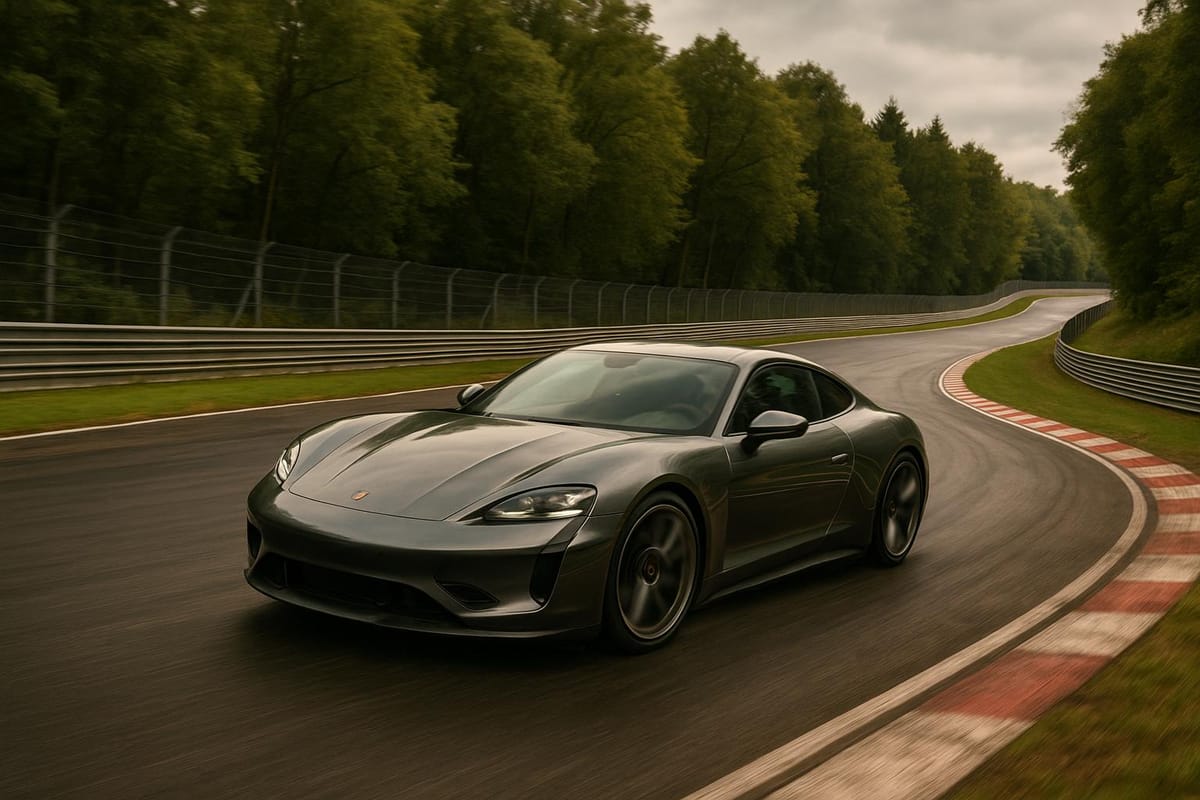
The Nürburgring Nordschleife is the ultimate test for cars, stretching 20.8 km with 73 turns and over 300 metres of elevation change. Since 1927, it has been the benchmark for vehicle performance, exposing weaknesses and pushing engineering forward. Here's what you need to know:
- Fastest Lap Times: The Mercedes-AMG ONE holds the record for a production car at 6:29.09 (2024), while the Rimac Nevera leads electric vehicles at 7:05.29.
- Key Innovations: Hybrid systems, electric powertrains, advanced aerodynamics, and lightweight materials are reshaping performance benchmarks.
- Market Impact: Record-breaking cars, like the Porsche Carrera GT, see significant value appreciation, with some models increasing over 200% in worth.
The track remains a proving ground for cutting-edge technology, from hybrid hypercars to electric vehicles, setting the stage for an electrified future of automotive engineering.
1927-1990: Early Nürburgring Records
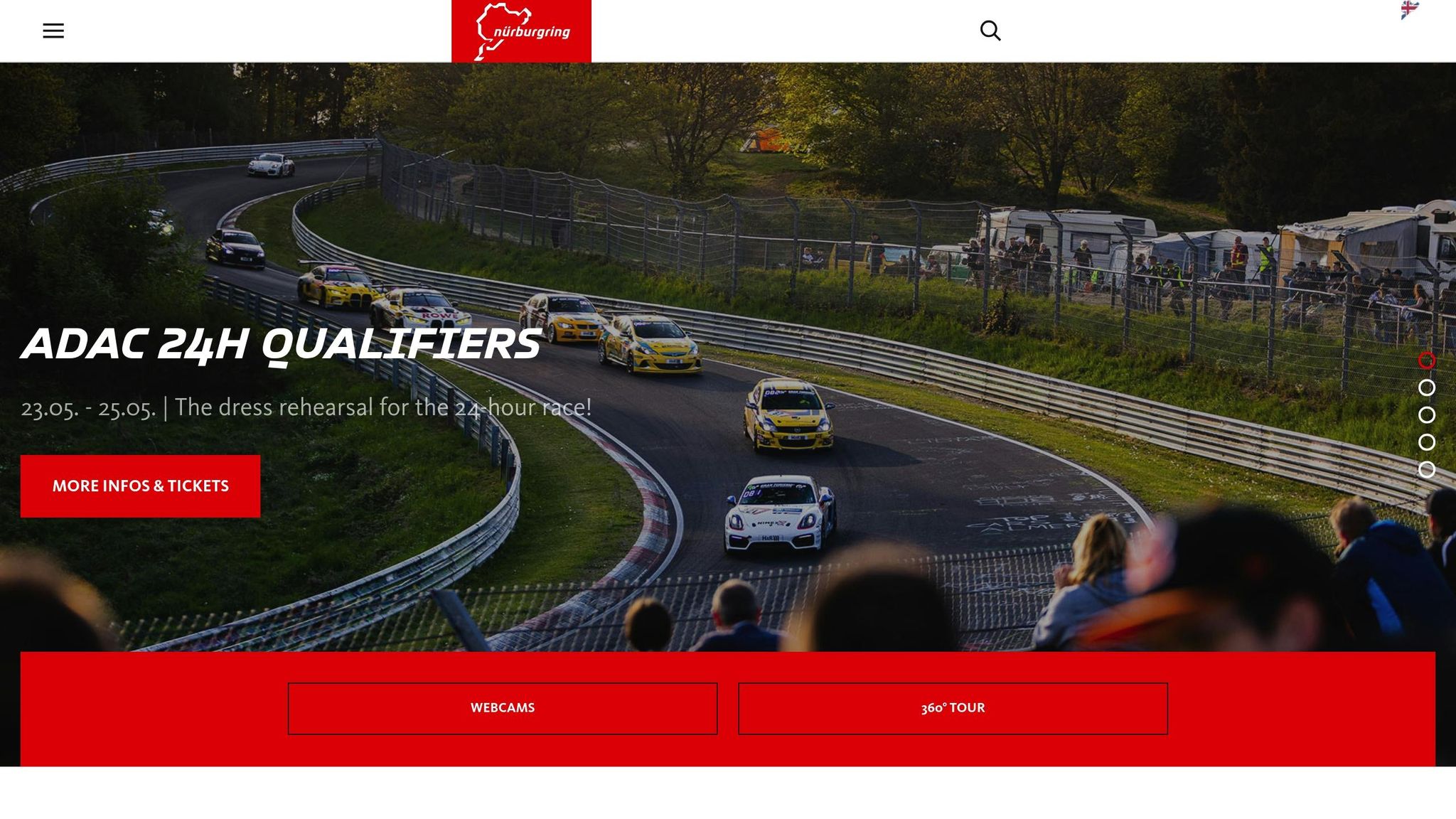
Building the Nordschleife
The construction of the Nürburgring in the 1920s was a defining moment in automotive history. Stretching 28.265 kilometres, the original track, known as the Gesamtstrecke, was inspired by the Targa Florio and designed to highlight Germany's engineering prowess and racing talent. With its steep mountain passes and dramatic elevation changes, the circuit was as much a spectacle as it was a challenge for competitors.
Record-Breaking Laps: 1947-1990
The Nürburgring's first races in 1927 set the tone for decades of record-breaking moments. Toni Ulmen clinched victory in the inaugural motorcycle race riding a 350cc Velocette, while Rudolf Caracciola triumphed in the over-5000cc class with a supercharged Mercedes-Benz "K" the following day.
Another early milestone came courtesy of Louis Chiron, who completed a lap of the Gesamtstrecke in his Bugatti at an impressive average speed of 112.31 km/h.
| Year | Achievement | Details |
|---|---|---|
| 1927 | First Motorcycle Win | Toni Ulmen (350cc Velocette) |
| 1927 | First Car Victory | Rudolf Caracciola (Mercedes-Benz "K") |
| Early 1930s | Gesamtstrecke Lap Record | Louis Chiron (112.31 km/h average) |
These feats not only celebrated the skill of the competitors but also highlighted the growing demands on the track, setting the stage for future adaptations.
Track Changes and Safety Updates
As cars became faster and more powerful, the need for safer racing conditions became increasingly urgent. Despite this, the original layout of the Nürburgring remained largely unchanged until 1971, maintaining its reputation as one of the toughest circuits in motorsport. During this period, success on the track was as much about driver skill as it was about the engineering of the vehicles.
Eventually, safety concerns led to gradual modifications to the circuit. These changes aimed to improve safety without compromising the Nürburgring's identity as a rigorous testing ground for both drivers and automotive innovation.
This early era established the Nürburgring as a legendary proving ground, laying the groundwork for its enduring status in motorsport history.
1990-2010: Engineering Advances
Electronic Systems and Downforce
From 1990 to 2010, car manufacturers introduced cutting-edge electronics and aerodynamic designs to tackle the Nürburgring's demanding layout. Systems like traction control, active suspension, and advanced braking technologies became common. The Bugatti EB110 stood out during this time, being one of the first to feature active suspension and carbon-on-carbon brakes, which greatly enhanced its handling and stopping power. Aerodynamic improvements, particularly in generating downforce, allowed cars to corner faster and remain more stable. Meanwhile, innovations like the bonded aluminium chassis of the Lotus Elise highlighted the benefits of lightweight construction. These advancements fuelled a new era of competition among manufacturers.
Manufacturer Competition
The 1990s were marked by fierce rivalries as manufacturers pushed the limits of technology to dominate the Nürburgring. Nissan’s Skyline GT-R earned its legendary "Godzilla" nickname for its commanding performances in touring car championships, embodying this spirit of competition. Iconic cars like the Porsche Carrera GT and Chevrolet Corvette ZR1 set impressive lap times, showcasing the advancements that defined the era.
| Vehicle | Lap Time | Key Innovation |
|---|---|---|
| Porsche Carrera GT | 7:12.69 | Composite chassis for reduced weight |
| Chevrolet Corvette ZR1 | 7:19.63 | High-performance PS2 tyres |
Porsche, in particular, continued to refine their engineering, with the 997 Turbo pushing the boundaries of performance.
Porsche 997 Turbo: Performance Milestone
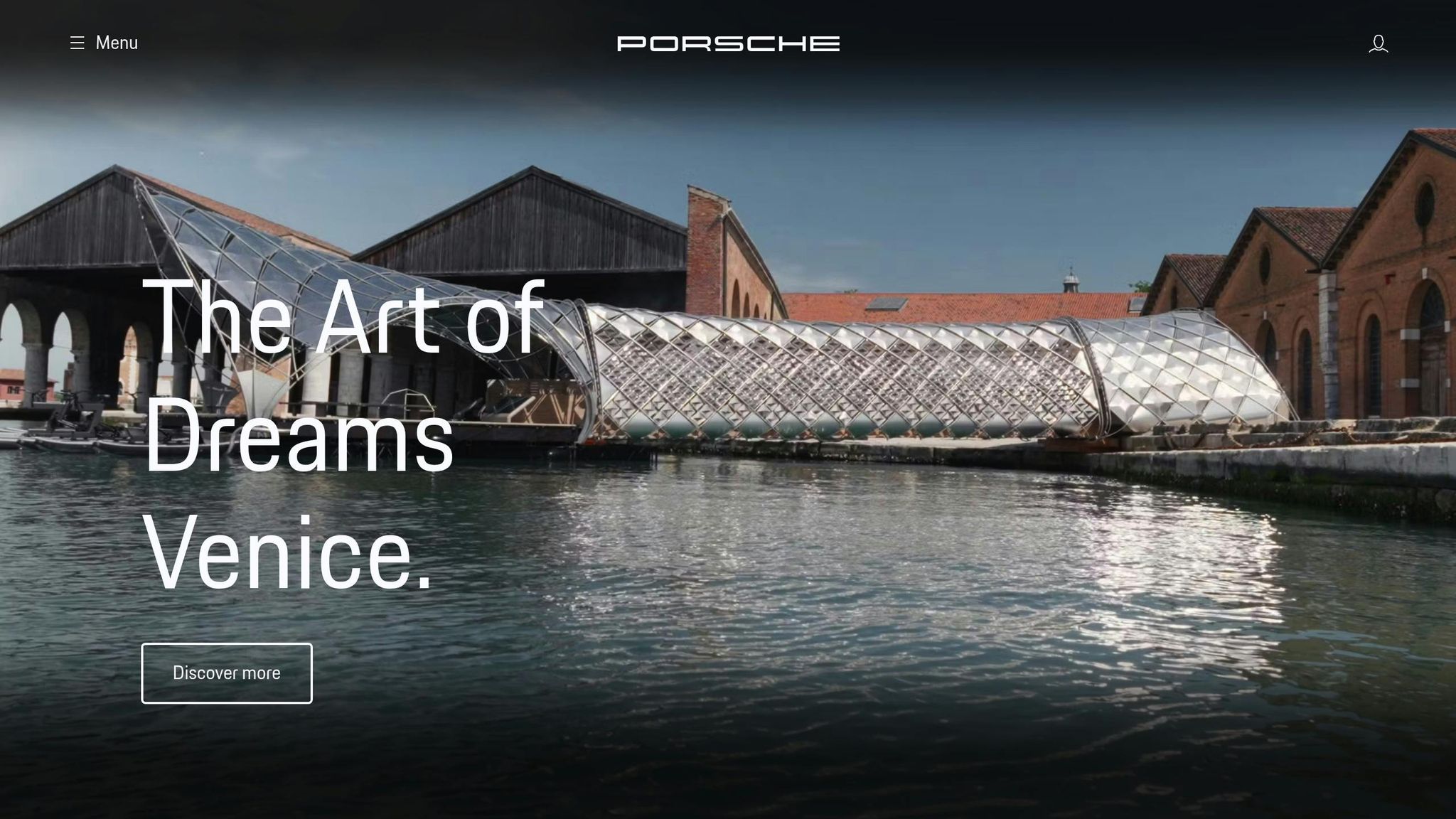
The Porsche 997 Turbo (produced from 2008 to 2011) became a standout example of the era’s engineering achievements. Powered by a 3.6-litre, twin-turbocharged flat-six engine, it delivered an impressive 470 bhp and 460 lb-ft of torque. This powerhouse could accelerate from 0 to 60 mph in just 3.7 seconds and reach a top speed of 193 mph. The 997 Turbo epitomised the rapid advances in performance and technology during this period.
2020s: New Power Systems
Modern Hypercar Performance
On 23rd September 2024, the Mercedes‑AMG ONE achieved an impressive lap time of 6:29.09. This hypercar pairs a 1.6‑litre turbocharged V6 engine producing 566 bhp with four electric motors adding 483 bhp. Together, they deliver a combined punch of hybrid power. With a 7‑speed automated manual transmission and Michelin Pilot Sport Cup 2 R MO tyres, the car weighs in at 1,695 kg - an engineering marvel designed for speed and precision. While hybrid systems like this push the boundaries of traditional performance, electric vehicles are also making waves with new benchmarks.
Electric Vehicle Records
Electric vehicles are proving they can compete at the highest levels. The Rimac Nevera set a production EV lap record in August 2023 with a time of 7:05.29, shaving 20 seconds off the previous best. Its quad-motor system generates a staggering 1,427 kW, propelling it to speeds of up to 354 km/h. Meanwhile, Xiaomi's SU7 EV prototype made headlines with a blistering lap time of 6:46.874, the fastest ever recorded for a four-door vehicle at the Nürburgring.
| Vehicle | Lap Time | Power Output |
|---|---|---|
| Rimac Nevera | 7:05.29 | 1,427 kW |
| Tesla Model S Plaid | 7:25.231 | 1,020 bhp |
| Porsche Taycan Turbo GT | 7:07.55 | 1,092 bhp |
Hybrid System Integration
While electric vehicles dominate the spotlight, hybrid systems continue to evolve and impress. The latest hybrid Porsche 911 (992.2) clocked a lap time of 7:16.934, improving by 8.7 seconds over its predecessor.
"We've always looked through the windscreen, not in the mirror", said Ola Källenius, CEO of the Mercedes‑Benz Group.
Modern hybrid systems are packed with advanced features, including:
- Regenerative braking to recover energy efficiently
- Torque vectoring for enhanced handling via electric motor management
- Active aerodynamics that adjust dynamically with speed
- Smart power distribution between electric and combustion engines
Further proof of electric powertrain potential came from the Aspark Owl SP600, which reached an astonishing speed of 438.73 km/h. These milestones continue to uphold the Nürburgring's reputation as the ultimate proving ground for automotive performance.
Market Value of Record Holders
Record Car Investment Returns
Nürburgring lap records have a noticeable effect on car values, with faster lap times often driving up market prices. Take the Porsche Carrera GT, for instance - when it shaved nearly 20 seconds off its lap time in December 2024, its market value saw a considerable boost.
The link between lap times and market appreciation is evident in these examples:
| Model | Original Price | Current Value | Appreciation |
|---|---|---|---|
| Porsche 918 Spyder | £870,000 | £3,000,000 | 245% |
| Ford GT | £410,000 | £1,500,000 | 266% |
| McLaren P1 | £805,000 | £1,940,000 | 141% |
| Lamborghini Aventador SVJ | £370,000 | £770,000 | 108% |
A notable milestone came in August 2024, when the Ford Mustang GTD broke the seven-minute barrier with a lap time of 6:52.072. This achievement not only enhanced the model's desirability but also gave Ford's stock a noticeable lift. Such feats highlight the value of authenticity, making thorough vehicle history checks more crucial than ever.
Vehicle History Verification
Ensuring the authenticity of record-holding cars requires careful documentation and detailed verification. Here’s what collectors should look for:
- Manufacturer certificates: Proof of origin from the automaker.
- Complete service history: A record of all maintenance performed.
- Competition records: Documentation of racing achievements.
- Matching numbers: Verification that key components retain their original factory serial numbers.
- Modification records: Details of any changes made to the vehicle.
Cars with matching numbers - where original factory parts are intact - are especially sought after and often fetch higher prices. To ensure both authenticity and mechanical soundness, it’s wise to have these vehicles inspected by marque specialists.
MARQHAUS Record Car Listings

Accurate valuations and verified records play a huge role in market listings. MARQHAUS offers enthusiasts a curated selection of record-breaking cars and high-performance icons. These listings often feature rare hypercars and limited-production models with racing pedigrees and documented performance credentials. Modern upgrades further enhance their performance and appeal, making them attractive investments for collectors and enthusiasts alike.
10 Fastest Cars In Nürburgring Lap Times Comparison
Conclusion: Future of Nürburgring Records
The evolution of lap times at the Nürburgring tells a story of incredible progress, with a clear trajectory pointing toward an electrified future. It’s a shift that reflects a broader transition from traditional combustion engines to cutting-edge electric powertrains.
Modern engineering continues to redefine what’s possible on the track by combining:
- Hybrid powertrains capable of delivering over 1,100 PS for unparalleled performance
- Advanced suspension systems that adapt seamlessly to varying track conditions
- Lightweight materials to optimise the power-to-weight ratio
- Sophisticated aerodynamics designed to maximise downforce and stability
As Kevin Giek, Model Line Vice President, puts it:
"The two records in Laguna Seca and on the Nordschleife show what great track potential there is in the Taycan".
Sustainability is also taking centre stage in the Nürburgring’s future. A prime example is Bonk Motorsport's BMW M4 GT4, which, in June 2024, achieved second place in the AT3 class while running on eFuel Racing 98, proving that sustainable technology can deliver high performance.
These advancements go hand in hand with record-breaking achievements, as seen in the table below:
| Vehicle Type | Model | Lap Time |
|---|---|---|
| EV Concept | Volkswagen ID.R | 6:05.3 |
| Production EV | Rimac Nevera | 7:05.29 |
| Electric Sedan | Porsche Taycan Turbo GT | 7:07.55 |
This rapid progress is setting the stage for a thrilling new era. Over the next decade, expect to see even greater strides in electric powertrains, sustainable materials, and intelligent vehicle dynamics. With more manufacturers turning to the Nürburgring to push the boundaries of their electric performance cars, the legendary circuit is poised to remain the ultimate testing ground for automotive innovation.
FAQs
How have hybrid and electric powertrains impacted Nürburgring lap times over the years?
Hybrid and Electric Powertrains at the Nürburgring
Hybrid and electric powertrains have reshaped the performance landscape at the Nürburgring, especially in recent years. With advancements like improved battery technology, regenerative braking systems, and the immediate power delivery of electric motors, these cars are delivering astonishing speed and efficiency on the track.
Standout moments include the rise of high-performance electric vehicles like the Porsche Taycan and Tesla Model S Plaid, both of which have clocked impressive lap times. On the hybrid front, hypercars such as the McLaren P1 and Porsche 918 Spyder have shown how blending electric motors with combustion engines can produce record-breaking results. These breakthroughs highlight the ongoing evolution of automotive engineering, pushing the limits of what's achievable on one of the world’s most challenging circuits.
How do record-breaking Nürburgring lap times influence the market value of production cars?
Record-breaking lap times at the Nürburgring often have a notable influence on the market value of high-performance production cars. These accomplishments are frequently seen as a testament to engineering prowess and can enhance a car's appeal to enthusiasts and collectors alike.
Although a quicker Nürburgring lap doesn’t always guarantee a higher resale value for every vehicle, it can significantly boost a model's reputation. This added prestige tends to attract buyers who prioritise performance. For rare or limited-production models, the combination of exclusivity and impressive track records can increase demand, often driving up their market prices.
What safety measures have been introduced at the Nürburgring to handle the increasing speed and power of modern cars?
Over time, the Nürburgring has made a series of safety improvements to match the increasing capabilities of today's high-performance vehicles. These updates include stronger barriers, better-designed run-off areas, and upgraded track surfaces that provide improved grip while minimising wear. On top of that, stricter rules have been put in place for both private and public track events, prioritising the safety of drivers and spectators alike.
The track is also subject to regular inspections and maintenance to meet ever-changing safety standards. These efforts ensure that the Nürburgring remains not only one of the most legendary circuits in motorsport but also one of the safest.

